
Self-Examination for Breast Cancer Awareness
Breast cancer is still one of the leading causes of death among women all around the world. Despite the number of cases of women diagnosed with the condition, many women are still unaware of the measures you have to take in order to catch the disease early on. To resolve this, many organizations from around the world campaign for breast cancer awareness.
One of the measures that doctors recommend all women to practice is regular breast self-exams. Self-examination is a way for you to notice abnormalities in your breasts, especially in how it looks and feels. Changes in your breast do not automatically mean you have breast cancer; it can be caused by several conditions. Still, once you notice abnormal changes within your breast, consult your doctor immediately.
Of course, a breast self-exam is not the most reliable technique for detecting breast cancer. However, a significant number of early cancer detection stems from women discovering a breast lump on their own. For this reason, self-examination is still an effective way to promote breast cancer awareness.
Self-examination does not require you to go to the doctor. You can do it within the comfort of your own home. So, here is a guide on how you can perform a breast self-exam.
How to Do a Breast Self-Exam?
If you decide to practice self-examination, follow these steps:
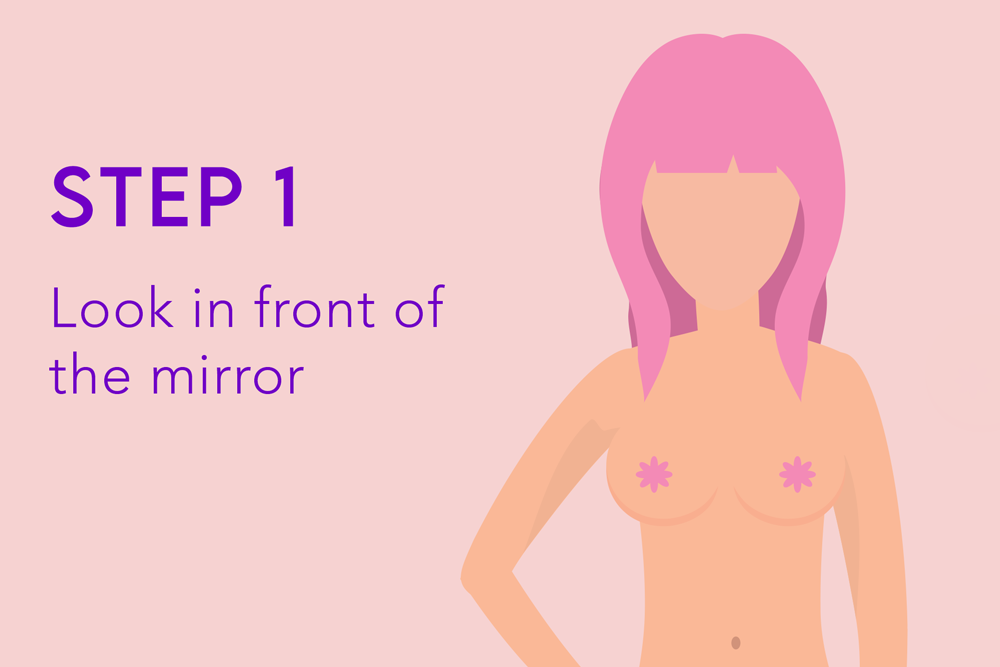
Look at your breasts in front of a mirror. Make sure to have your shoulders straight and place your arms on your hips.
Examine if your breasts are in their usual size, shape, and color, without visible distortion or swelling. Consult your doctor once you notice dimpling, puckering, or bulging of the breast skin. Any form of redness, soreness, rash, or swelling tells you to have it checked immediately.
Aside from the breast itself, check if the position of your nipples changed. Also, if you notice an inverted nipple, where it is pushed inward than sticking out, talk to your doctor about it.
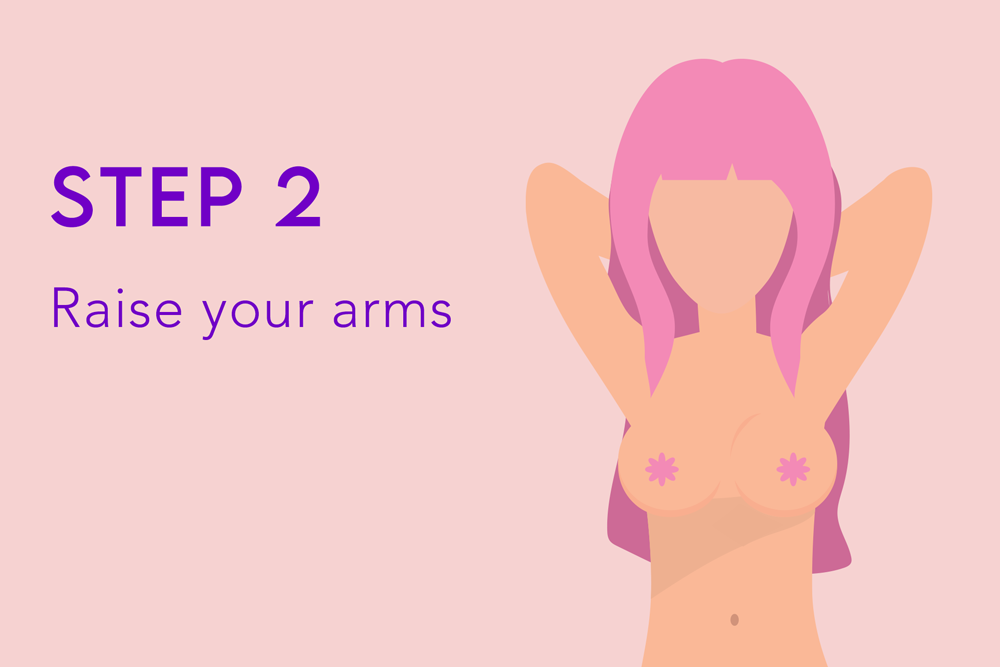
Raise your arms and look for the same changes, as mentioned earlier.
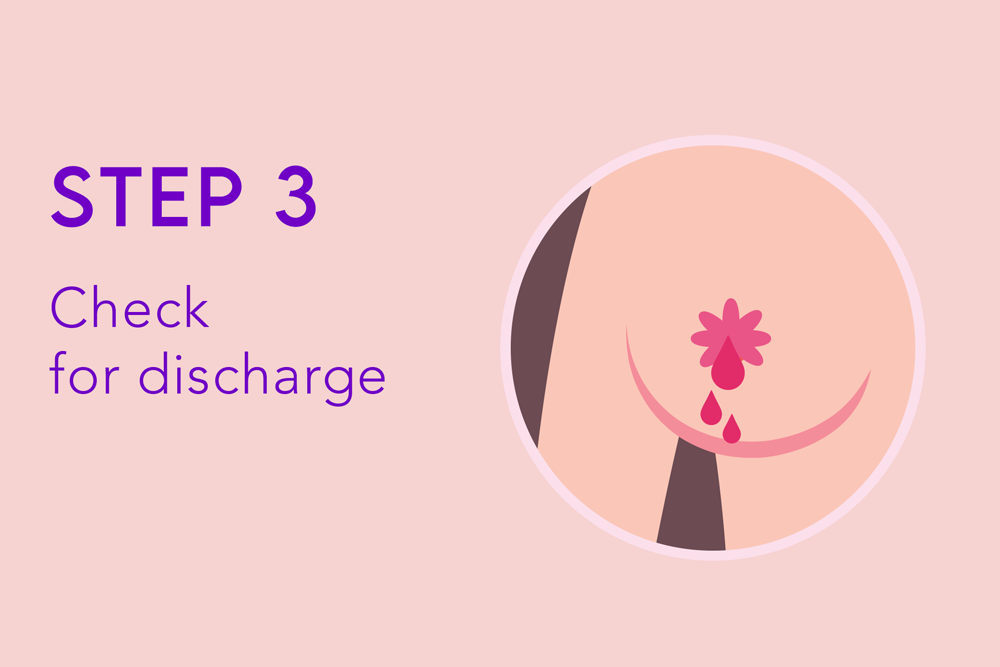
When checking in the mirror, look for any signs of liquid discharge (a watery, milky, or yellow fluid or blood) from your nipples.
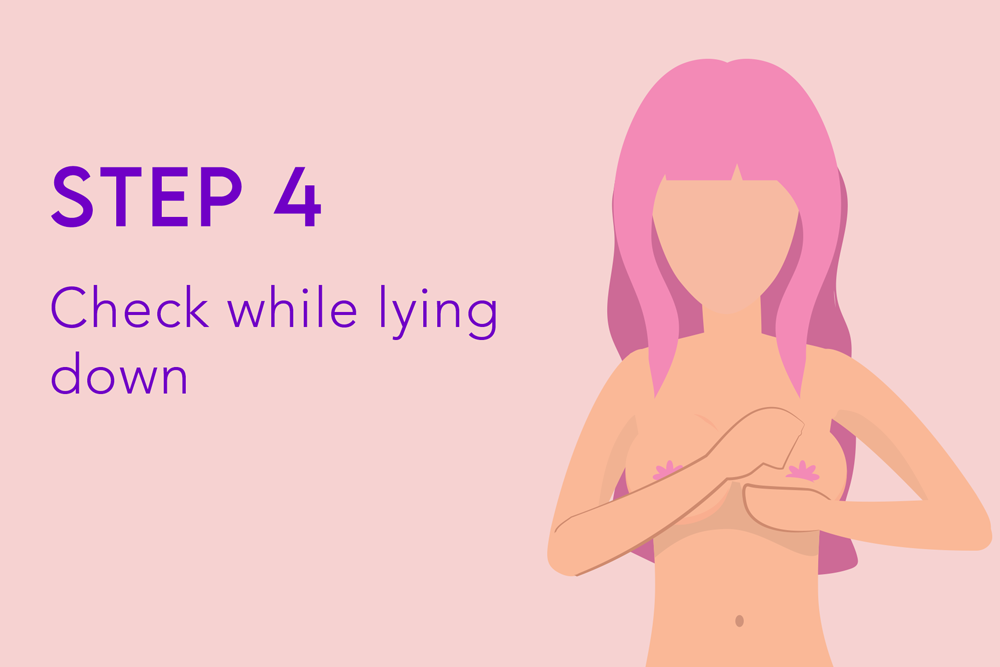
Next, examine your breasts using your hands. Lay down on a flat surface like your bed or the floor. Using your right hands, feel your left breast. Use firm, smooth touches with the finger pads of your hands, keeping the fingers flat and together. With circular motions, cover the entire breast area, from top to button (collarbone to abdomen) and side to side (armpit to cleavage). Repeat the same step using your left hand to feel your right breast.
To make sure you cover the whole breast, you can also follow a pattern. With the same padding movement, start at your nipple and move larger circles until you reach your breast’s outer edge. Another way you can follow is to move your fingers up and down vertically in rows. As you go from the front to the back of your breasts, add more pressure. Feel the skin and tissue just beneath your breast lightly. Then, use medium weight once you reach the middle of your breast and apply firm pressure for the deep tissue in the back. Once you reach the deep tissue, you should be able to feel down to your ribcage.
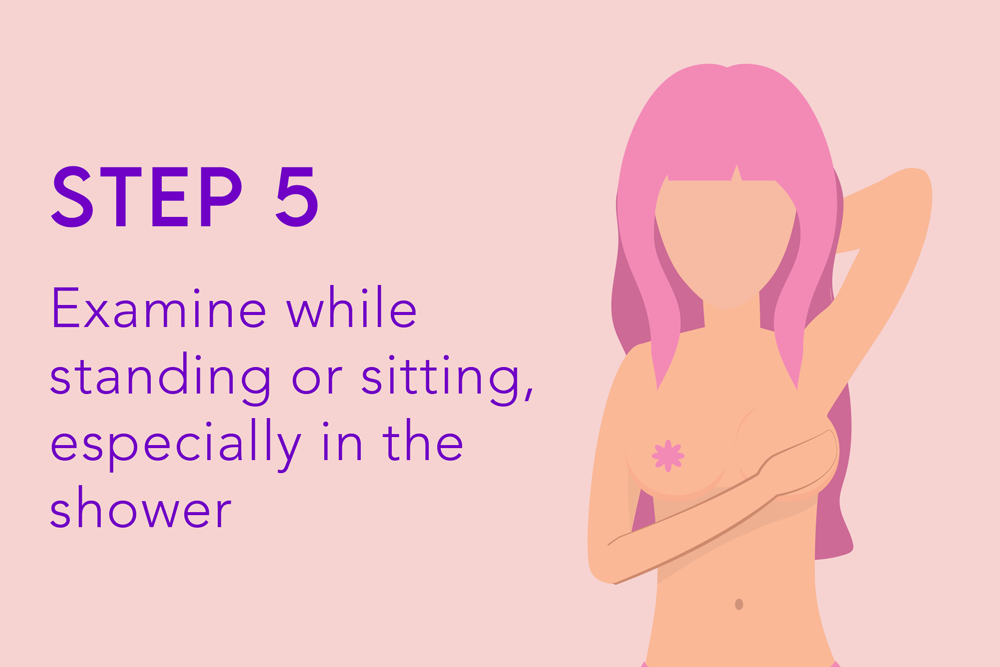
Finally, use your hand to examine your breasts while standing or sitting. Many women find it easier to do this step when their skin is wet and slippery, so experts recommend doing this in the shower. Make sure you cover the entire breast, using the same hand motions you did in step 4.
When to Do a Breast Self-Exam?
It is best to practice breast self-exam after you have consulted with your doctor for a demonstration. Having a professional opinion regarding instructions and techniques you can follow will guide you in doing it yourself.
Experts also recommend examining your breasts during your menstrual cycle. Breast changes happen during this period because of fluctuating hormone levels. Swelling begins to subside when your period starts. Around this time, you may perform self-examination as your breasts become less tender. The week after your period ends is the best time to self-exam your breasts.
When to Call Your Doctor?
When you do self-examination regularly, you will have a higher chance of spotting any abnormal changes in the breasts, and is generally a good way to practice breast cancer awareness. Don’t hesitate to contact professional help once you notice one of the following:
- a hard lump near your underarm
- abnormal thickening or prominent fullness in the surrounding tissue
- dimples, puckers, bulges or ridges on the breast skin
- change in nipple position or inverted nipples
- redness, warmth, pain, or swelling
- itching, rashes, scales, or sores
- abnormal nipple discharge
What to Do When You Find a Lump?
A benefit of practicing breast cancer awareness is that you won’t panic after discovering a lump in your breast. Most women have some lumps or lumpy areas in their breasts all the time, which are usually benign or non-cancerous. Still, if you discover any changes with the feel and look of your breasts, talk to your doctor as soon as possible.
Make it a habit to perform breast self-exam regularly. This way, you will familiarize yourself with the standard shape, size, color, and feel of your breast, making detecting future changes easier. It will also help if you start a journal to record the findings of your self-examination.
If you seek a doctor’s help after noticing a lump, make sure you leave the consultation with the answers you need. Understand the explanation behind the lump or change in your breast. If you are not satisfied with your doctor’s advice, don’t hesitate to seek a second opinion. There is nothing wrong with taking cautionary measures, especially if it can make you live a happier and healthier life.
